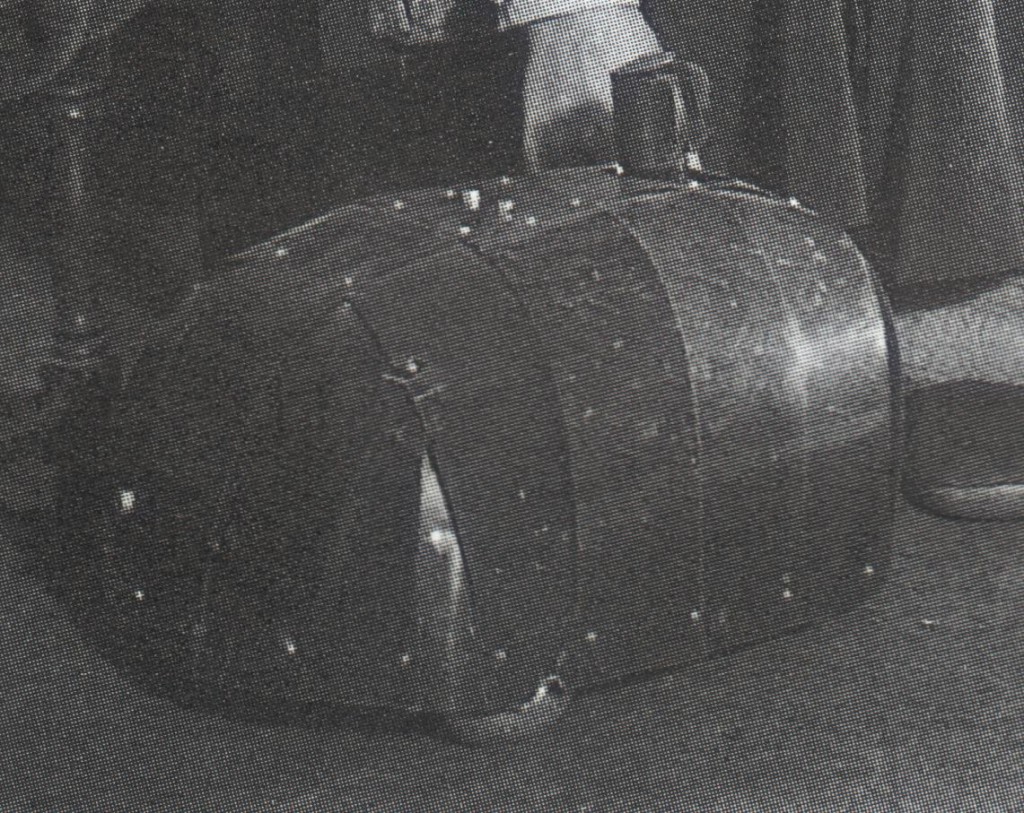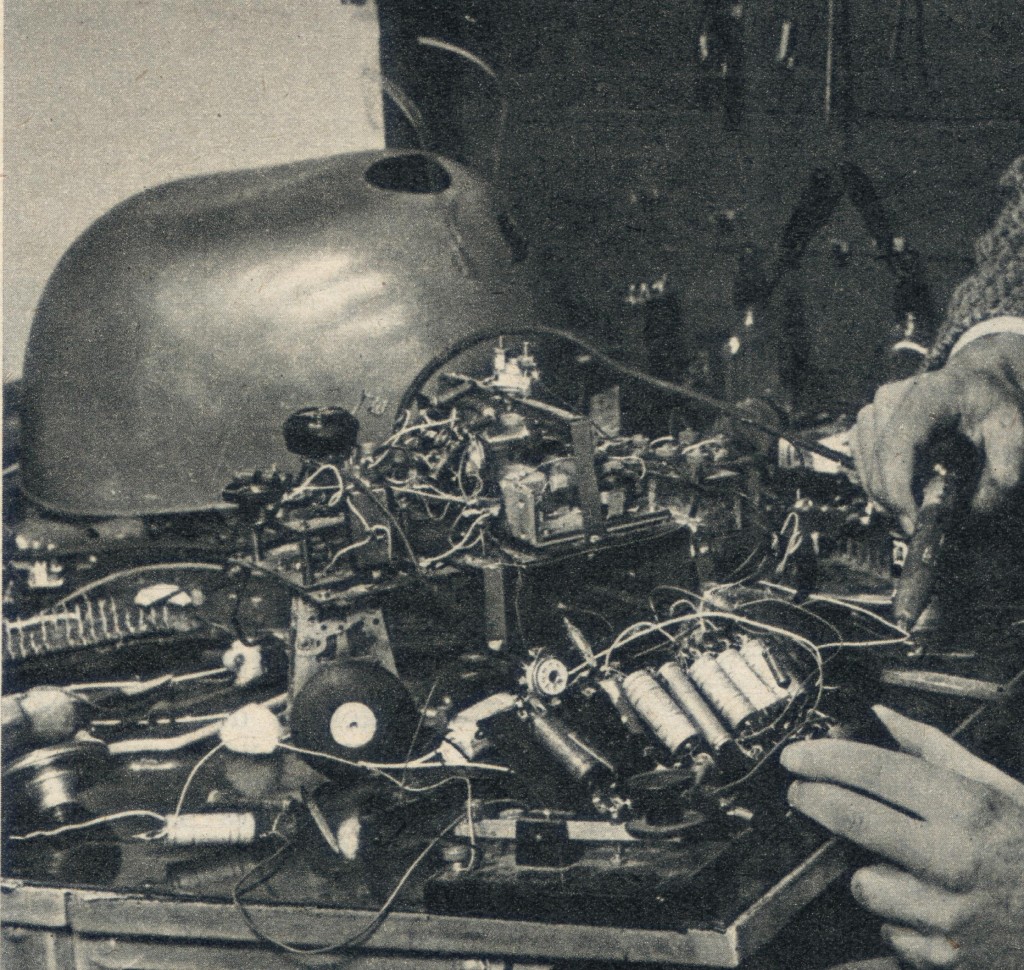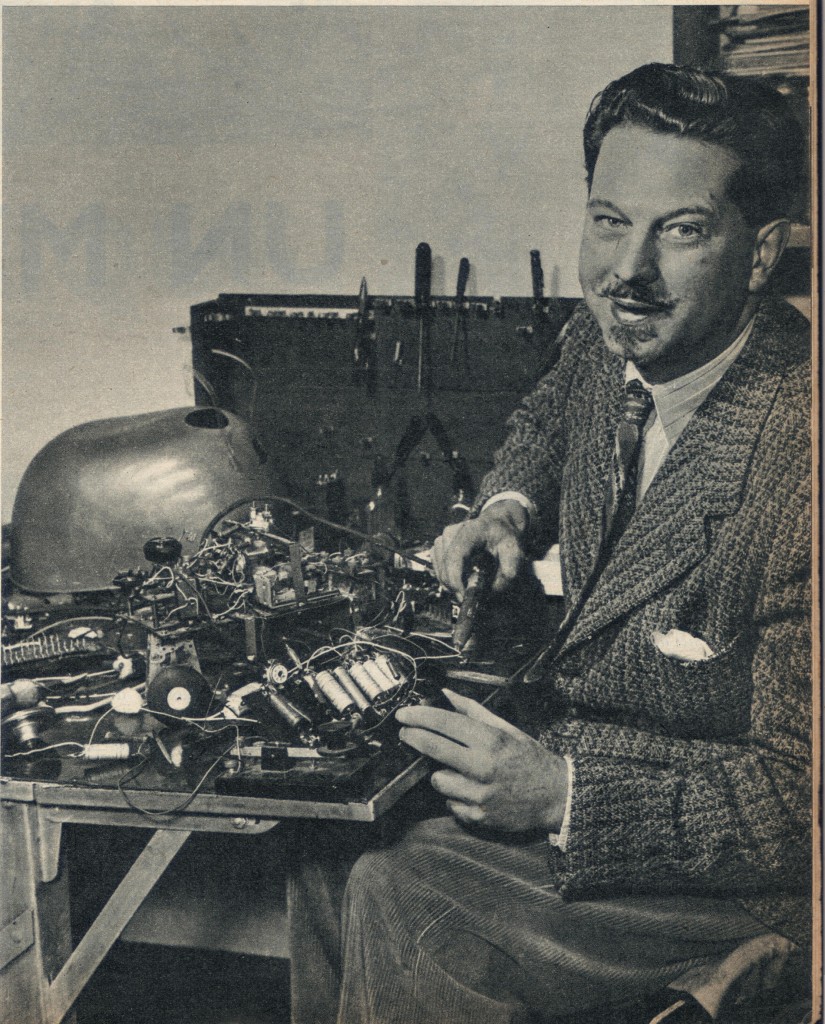ELMER – (ELectro-MEchanical Robot)
How the media reported the coming of ELMER :
Lethbridge Herald – Wednesday , February 25, 1948
Robot Tortoise Likes Women –Recognizes Voices, Comes To Meet When Called-Can be SulkyLONDON. Feb. 25 Daily Express reported today that Dr. W. Grey Walter. 38-year-old brain scientist has built a robot tortoise so "human that it likes company, recognizes voices and comes to heel when called. The paper said that the tortoise avoids cold or damp weather, great heat or bright lights, likes women but dislikes men. "It can be temperamental and will be neurotic and sulky for days if teased or given too many contradictory instructions," the Express added. Dr. Walter, at the Burden Neurological Institute at Bristol, built the tortoise with ordinary radio tubes, switch relays, miniature microphones -for registering sound and photoelectric cells for recognizing color and shape.
Lethbridge Herald – Thursday , February 26, 1948
Has Not Yet Made "Robot Tortoise"BRISTOL, England, Feb. 25 Dr. W. Grey "Walter, 38-year-old director of the Burden Neurological Institute here, said Wednesday that it "should be possible" to build a "robot tortoise" which would react to light and sound, but he has not yet made one. "The most I can say is that theoretically such a thing should be possible and that I am planning to make one if I have the time," he added. Earlier a London newspaper had reported that the brain scientist had built a robot tortoise so human that it liked company, recognized voices and avoided cold or damp weather, great heat or bright lights.
Kingsport News –(AP) – Thursday, May 27, 1948
Inventor Ready To Build His Robot TortoiseBristol, England — AP —A robot tortoise with a "mind" has reached past the blueprint stage at Burden Neurological Institute. Conceived by Dr. W. Gray Walter, director of the institute's physiological department, the tortoise is designed to react just like the real thing. He said the tortoise probably would be very large at first "when I get the time to build it." He chose this particular creature because of its "convenient shape. It's size may be reduced when it becomes possible to make microscopic valves, microphones and photo-electric cells to control it." When completed he said he would "challenge anyone to tell whether or not it is living, without prolonged observation." Dr. Walter pictured something like this happening at the institute in the not too distant future: "As you stand by the fire a robot tortoise lumbers along and nestles cosily by your leg. You exclaim in astonishment. The tortoise sheers off nervously and takes refuge under the sofa, but a low whistle brings it back again. It will even seem to possess all manner of lovable qualities conspicuously missing in other robots." The only trouble is, he said, "I am not sure yet how it will react to publicity."
 At ELMER's rear you can see the two different coloured plugs used for charging the batteries. The later automatic re-charging appeared for only a short period with ELSIE. The photo below is a discovery of mine, being the only picture known to date showing ELMER's internals. The front is to the left and you can clearly see the clockwork mechanism so often talked about. The Photo-electric cell (PEC) holder can be seen, but the PEC itself has been removed, which is has to be to remove the shell. What is interesting is the type of front wheel. It appears single-sided, and pneumatic like the rear-types we generally see for his younger sister ELSIE. In the later time-lapse photos that we will see of ELMER, his trace is a lot more jerky and less smooth than ELSIE. In his book 'The Living Brain', Grey suggests to other builders of the model that "the front tyre should be of rubber, but thin and fairly hard, so that it can turn easily", apparantly after the lessons learnt from ELMER. This photo is even more significant, in that the CORA circuit can be seen under construction in the foreground, but more on that find when I discuss CORA in a later article.
At ELMER's rear you can see the two different coloured plugs used for charging the batteries. The later automatic re-charging appeared for only a short period with ELSIE. The photo below is a discovery of mine, being the only picture known to date showing ELMER's internals. The front is to the left and you can clearly see the clockwork mechanism so often talked about. The Photo-electric cell (PEC) holder can be seen, but the PEC itself has been removed, which is has to be to remove the shell. What is interesting is the type of front wheel. It appears single-sided, and pneumatic like the rear-types we generally see for his younger sister ELSIE. In the later time-lapse photos that we will see of ELMER, his trace is a lot more jerky and less smooth than ELSIE. In his book 'The Living Brain', Grey suggests to other builders of the model that "the front tyre should be of rubber, but thin and fairly hard, so that it can turn easily", apparantly after the lessons learnt from ELMER. This photo is even more significant, in that the CORA circuit can be seen under construction in the foreground, but more on that find when I discuss CORA in a later article.
